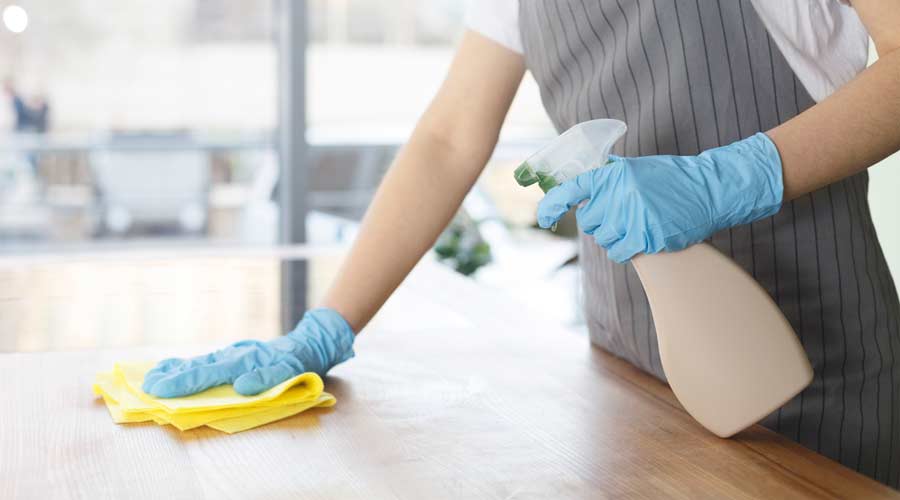
This article was originally published in 2016 and has been updated to reflect current information.
Cotton advocates say the material is a good choice when bleach or acidic chemicals are required, because they can break down and destroy microfiber cloths. They also prefer to use cotton on rough surfaces such as concrete, which could tear up a microfiber pad. Finally, they say cotton is helpful for mopping up large amounts of liquid because its fibers are longer and able to hold more than microfiber.
“We use a traditional closed-loop cotton-blend mop if there’s a heavy bioburden,” Nash says. “Microfiber would push around a big mess of bodily fluids, but it wouldn’t pick it up. You don’t want to stand there and use 10 microfiber cloths versus one traditional mop head. Of course, we go back over the surface with microfiber once the debris is removed.”
Hicks argues that there’s no situation where cotton outperforms microfiber. Even in the scenarios above, he says, microfiber would be a better choice than cotton, which only spreads soil and bacteria around, rather than picking up and removing it.
“Until microfiber, cotton was the only option,” Hicks says. “Microfiber came along and completely changed the old rag-and-bucket way of doing things. Microfiber has improved the cleaning process in a revolutionary way.”
Improve Cleaning With Microfiber
Most argue that nine out of 10 times, microfiber will outperform cotton. When it comes to window cleaning, microfiber can trap dirt to prevent smearing and doesn’t leave lint behind. For floor finish, lightweight microfiber allows a user to more easily apply thin, smooth coats. Microfiber dusts without leaving lint and polishes without scratching or streaking.
Microfiber is also a more ergonomic choice than cotton. That’s because it requires less water. Using 10 to 30 times less liquid means microfiber weighs significantly less than cotton, which helps reduce the likelihood of injuries from lifting, moving and wringing out a mop. Some argue it also means there are fewer slip-and-fall accidents because floors dry faster.
Reduced water usage, as well as less need for chemicals in the cleaning process, also makes microfiber the cloth of choice for facilities concerned with environmental sustainability. In fact, microfiber rags and mops contribute to credits toward the USGBC's LEED program.
The biggest benefit of microfiber, however, is for healthcare, schools and other markets that put a high priority on infection control. A study by the U.S. Environmental Protection Agency found that extremely fine microfiber (.38 micrometer diameter) removes up to 98 percent of bacteria and 93 percent of viruses from a surface using only water. Cotton, on the other hand, removes only 30 percent of bacteria and 23 percent of viruses.
According to a former director of environmental and linen services for a Florida-based hospital, microfiber is very effective at removing germs and bacteria during disinfecting. ATP testing done with both microfiber and cotton verified that there was better removal of bacterial when microfiber in conjunction with disinfecting chemicals.
The hospital saw a reduction in its overall infection rates since it dumped cotton in favor of microfiber products.
Differences Between Microfiber And Cotton
When To Use Reusable Or Disposable Microfiber

 Celebrating BSCAI's 60th Anniversary eBook
Celebrating BSCAI's 60th Anniversary eBook The Down and Dirty on Cleaning in Virus Season
The Down and Dirty on Cleaning in Virus Season How Surfactant Use is Expanding in Commercial Cleaning
How Surfactant Use is Expanding in Commercial Cleaning